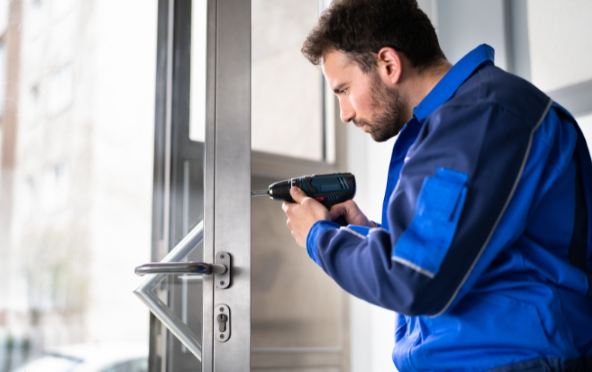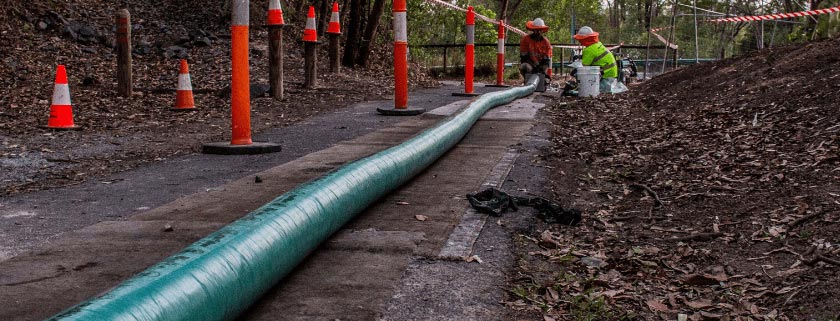Pipe relining is a process that involves the repair of damaged or deteriorated pipes without the need to excavate and replace them. It is often used as an alternative to traditional pipe repair methods, which can be disruptive and costly. Total Relining Solutions uses the latest Pipe relining technology and gives the most cost-effective and permanent solution for your needs.
There are several techniques for relining pipes, but the most common method involves the insertion of a liner made of durable material, such as fiberglass or polyethylene, into the damaged Pipe. The liner is coated with a resin that hardens to create a new, seamless pipe within the old one.
Pipe relining can be used to repair various pipes, including sewer, water, and drain. It is often used to repair pipes damaged by corrosion, tree roots, or other factors.
Table of Contents
Why Is Pipe Relining Needed?
Pipe relining is often needed when pipes become damaged or deteriorated and need repair. Some common reasons for pipe damage include corrosion of pipes over time due to exposure to acidic or alkaline substances, which can weaken the pipes and cause them to fail.
Tree roots can grow into pipes and cause damage by breaking through the walls of the pipes. Pipes can become damaged or deteriorate over time due to age and wear and tear. Pipes can become damaged or displaced due to ground movements, such as earthquakes or soil erosion.
Pipe relining is often used as an alternative to traditional pipe repair methods, which can be disruptive and costly. It allows for the repair of damaged pipes without the need for excavation and replacement, which can minimize disruption and reduce costs. Total Relining Solutions is the best in Pipe relining in the inner west.
Benefits Of Pipe Relining
There are several benefits to Pipe relining as a method for repairing damaged or deteriorated pipes:
Minimized disruption: Pipe relining can be performed without the need for excavation, which means that there is minimal disruption to the surrounding area. This can be especially important in areas with heavy traffic or buildings where excavation may be difficult or impossible.
Cost-effective: Pipe relining is often more cost effective than traditional pipe repair methods, as it does not require excavating and replacing the damaged pipes. This can reduce the overall cost of the repair.
Durability: The new Pipe created through Pipe relining is often more durable than the original Pipe, extending the system’s life and reducing the need for future repairs.
Environmentally friendly: Pipe relining can help to reduce the amount of waste generated during the repair process, as it does not require the replacement of the damaged pipes. This makes it more environmentally friendly than traditional pipe repair methods.
Quick repair: Pipe relining can often be completed more quickly than traditional pipe repair methods, as it does not require the excavation and replacement of the damaged pipes. This can minimize downtime and get the plumbing system up and running again as soon as possible.
Overall, Pipe relining is a useful and cost-effective method for repairing damaged pipes without excavation and replacement. It offers several benefits, including minimized disruption, cost-effectiveness, durability, and environmental friendliness.
Pipe Relining Or Pipe Replacement – Which Is The Most Effective?
Pipe relining and pipe replacement are used to repair damaged or deteriorated pipes. Which method is most effective depends on the specific circumstances of the repair.
Pipe relining is a process that involves the insertion of a liner made of durable material, such as fiberglass or polyethylene, into the damaged Pipe. The liner is coated with a resin that hardens to create a new, seamless pipe within the old one. Pipe relining can be used to repair various pipes, including sewer, water, and drain. It is often used to repair pipes damaged by corrosion, tree roots, or other factors.
Pipe replacement involves excavating and removing the damaged Pipe and the installation of a new pipe in its place. Pipe replacement is often necessary when the damage to the Pipe is too severe to be repaired using other methods, such as Pipe relining.
In general, Pipe relining is often the more cost-effective and minimally disruptive option, as it does not require excavating and replacing the damaged Pipe. However, in some cases, pipe replacement may be the more effective option, particularly if the damage to the Pipe is severe or if the Pipe is too old or degraded to be repaired using other methods.
Overall, the most effective method for repairing damaged pipes will depend on the specific circumstances of the repair and should be determined by a qualified professional.
How Does Pipe Relining Work?
The first step in Pipe relining is to inspect the damaged Pipe to determine the extent of the damage and the best repair method. This is typically done using a camera or other specialized equipment.
Next, the inside of the damaged Pipe is cleaned to remove any debris or obstructions that may interfere with the repair process. Then the damaged Pipe is prepared for the relining process by creating an access point and inserting a liner into the Pipe.
The liner is typically durable, such as fiberglass or polyethylene. Then the liner is coated with a resin that hardens to create a new, seamless pipe within the old one. The resin may be applied with a spray or a saturating roller. After the resin is applied, the liner is left for curing, allowing the resin to harden and create the new Pipe.
After the curing process is complete, the new Pipe is inspected to ensure it is installed and functioning properly.
When Should I Get Pipe Relining, And When Should I Excavate?
Pipe excavation involves excavating and removing the damaged Pipe and installing a new pipe. Pipe excavation is often necessary when the damage to the Pipe is too severe to be repaired using other methods, such as Pipe relining.
It may also be necessary if the Pipe is too old or degraded to be repaired using other methods. Pipe excavation is more disruptive and costly than Pipe relining, as it requires excavating and replacing the damaged Pipe. Pipe relining is typically a more cost-effective and minimally disruptive, as it does not require excavating and replacing the damaged Pipe.












